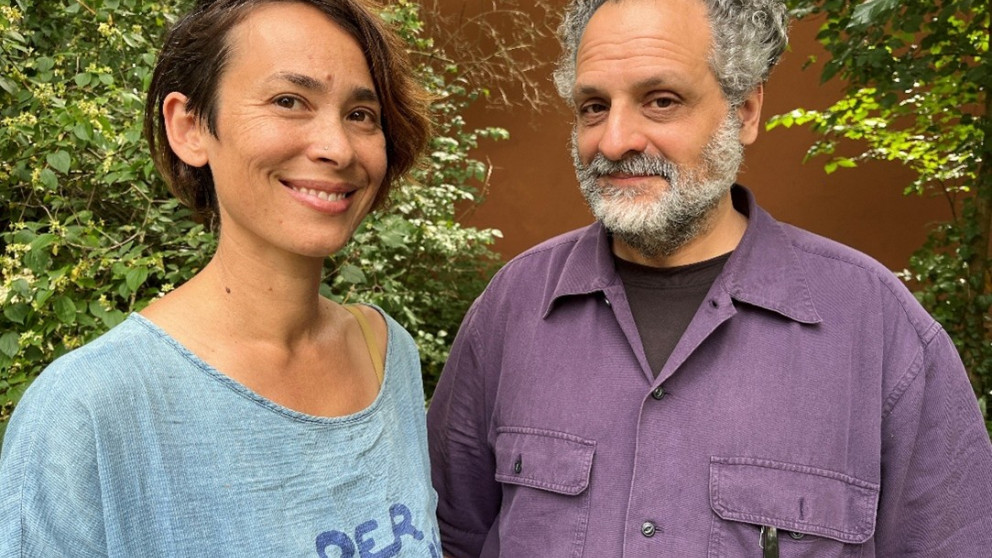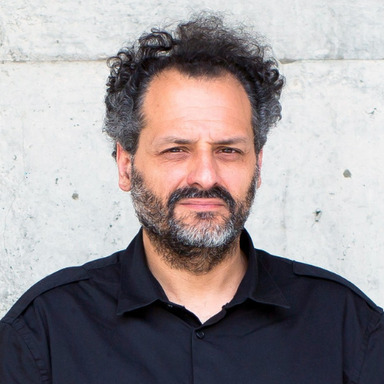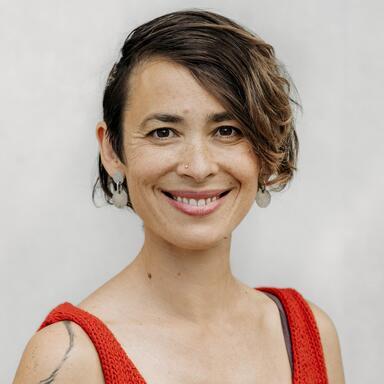“We are all part of the solution”
07.07.2025
The Arts and Media Programme of the German Academic Exchange Service (DAAD), the City of Potsdam, and the Research Institute for Sustainability (RIFS) at the GFZ recently established a new fellowship, the “Planetary Transitions: Potsdam Artist Residency”. The inaugural fellowship has been awarded to architects Sam Spurr and Eduardo Kairuz. During their stay in Potsdam, the Australian duo will work on “Lithium Unearthed: Navigating the Hope and Hazards for a Green Future”. In this interview, they talk about their project, their approach, and what they hope to achieve.

Your fellowship project is titled “Lithium unearthed – Navigating the Hope & Hazards for a Green Future” – what does that mean?
Eduardo Kairuz: Lithium is a critical material for the energy transition. To decarbonize the planet Lithium plays a key role because, so far, no other material matches its ability to store energy efficiently. Lithium-ion batteries are currently the best option for storing energy generated from renewable sources like wind, solar, and ocean energy. That's what makes lithium so important. Lithium is used in electric vehicles, smartphones, laptops, smartwatches, electric wheelchairs, and countless other battery-operated devices. If it charges, it likely contains lithium. So that's the positive side of the picture: Lithium can enable a cleaner, decarbonized future and stands at the heart of our transition to green energy.
But then the hazard part of the title is that that metal has to be extracted from somewhere. And right now the largest sources of lithium are located in Chile, Argentina, and Bolivia. This area is known as the Lithium Triangle. There are also vast reserves in the southwest of Western Australia and a lot of lithium in the US and in China. But lithium mining comes with significant environmental and ecological consequences. It requires vast amounts of water, often in regions where water is already scarce. In countries like Chile, it disrupts fragile ecosystems and desecrates sacred lands, deeply affecting Indigenous communities and traditional landowners. This is the other side of the story—the hazard. For us, the key question is: how can we make this visible?
Sam Spurr: We're trying not to give solutions to that conflict or that complexity. But there still needs to be critical discussion around where lithium comes from, the supply chains, what it does. The way we're holding some of these questions is around its volatility. The lecture we're giving therefore is called “volatility”. The title comes from the fact that the material itself is volatile. Everyone's heard stories about electric vehicles, e-bikes and other gadgets exploding or igniting. The idea of volatility captures many of the tensions and controversies surrounding lithium. There’s the economic volatility – seen in fluctuating stock prices and shifting investor sentiment. But there's also social and political volatility, embodied by the high-profile figures driving the narrative. Elon Musk, perhaps the most well-known, has been a vocal advocate for lithium, famously calling it "white gold" or "the new oil"—if not the first, certainly one of the loudest.
How do you approach the topic?
Eduardo Kairuz: We like to go to archives and start understanding the origins of these materials. In this case, it was interesting to discover all these parallel stories. Lithium isn’t just significant today – it has a fascinating history. Long before its use in battery technology and the energy transition, lithium was used in wellness practices, such as lithium-infused water baths that were believed to improve mood and well-being. Today it is used to treat people afflicted by bipolar disorder. What’s compelling for us is uncovering these less obvious connections across time. That’s really where our approach begins: by exploring lithium’s layered history. From there, the next step is to digest all this background and begin translating it into text and images.
At other times, our work can get very technical – as was the case with the exhibition Fossil Fables, we held in 2023. For that project, we created 3D models of open-cut mines, which involved collecting satellite imagery, processing digital elevation models, and transforming that data into detailed three-dimensional visualizations. Our methods vary widely. There's no single, fixed process—we adapt our approach depending on the context, the material, and the story we want to tell.
You both have a background in architecture: How does the profession play into the project?
Sam Spurr: The fact that we come out of architecture is important. We both studied and teach architecture; we do architectural education and we're bringing an architectural lens to the problem. We started the Global Extraction Observatory (GEO) because we felt that we bring specific skills as architects to the climate crisis. We've all known the facts around climate change for a very long time. Why aren't people caring? How do we bring the skills we have learnt and developed as architects to that conversation?
How did you come to establish the Global Extraction Observatory (GEO) and how did you meet?
Eduardo Kairuz: I migrated to Australia from Venezuela in 2009. I started working with an incredible group of people and Sam was one of them. We worked well together, which led to our first collaboration in a teaching environment. At the time, she was leading a new interior design programme. Later, I moved to Melbourne for a different job, but we stayed in touch. Eventually, we bumped into each other at an event in Melbourne...
Sam Spurr: At that time we discussed the topic of the Adani Mine, a very big coal mine in the north of Australia in Queensland at a place called the Galilee Basin. It was going to be one of the biggest coal mines in the world and is expected to produce more carbon than all the coal mines in the world over its 60-year lifespan. We came together around this shared frustration around the fact that this was going to go ahead, and there wasn't enough protest or action. We both got really angry about that. We asked ourselves: What can we do about this – we’re just architects. What can we do with our skills? We do not pretend that architecture will solve the problem at all. We just try to contribute. But our disgust about the coal mine was the birth of GEO and a closer collaboration.
What can an exhibition or performance achieve in your eyes?
Eduardo Kairuz: It's about raising awareness of these issues. We all think that people know about these things but it's not necessarily the case. So, I think our work aims to raise awareness, to bring people into some sort of understanding is very, very important. That's one of the things we can achieve.
Sam Spurr: The other one is that these performance lectures are also provocations. We try to challenge the audience, we sometimes use confronting images, we raise questions. Several times after our lectures, during the Q&A sessions, people have expressed frustration that we’re not offering a clear way out or a solution. But the truth is: the solutions are already there. Scientists have been telling us what needs to be done. And we’re all part of the solution!
Next event:
Global Extraction Observatory - Lecture on Tuesday, 8th July 2025 at 6 pm at the Brandenburg Museum


